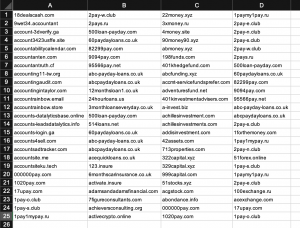
Dynamic pricing, it seems, is the latest pricing trend that has taken the ecommerce industry by storm. While it is not an entirely new concept and companies have been using it randomly over the years, it is certainly something that is much more relevant in the new age of ecommerce companies.
Simply put, dynamic pricing is a strategy in which product prices continuously adjust, sometimes in a matter of minutes, in response to real-time supply and demand. For example: Amazon, the global ecommerce giant, is one of the largest retailers to have adopted dynamic pricing and updates prices every 10 minutes.
If you own an ecommerce company, you should seriously consider adopting this pricing model since it has several benefits for your business.
Here are a few of them:
1. It Gives You Greater Control on Your Pricing Strategy
A common argument against dynamic pricing is that it reduces your control over product pricing. In reality, it has a completely opposite effect. As a retailer using dynamic pricing, you’ll have access to real-time price trends across thousands of products in your industry. You’ll be able to see the pricing changes of your competitors, and will have a clear idea of the supply and demand of individual products. This will help you set the right prices for different products and maximize your revenues.
2. It Allows Flexibility Without Compromising Your Brand Value
Many eCommerce retailers shy away from dynamic pricing because of the potential damage it can cause to their brand value and user experience. After all, consumers can easily mistake your fluctuating product prices to manipulation or even fraud, right?
Wrong!
Brands can actually protect, and even strengthen, their brand value by implementing dynamic pricing. Retailers can set a price floor that reflects their brand value and allows them the flexibility to stay profitable. They can use dynamic pricing to launch seasonal and promotional offers as well, while still remaining profitable (something quite difficult to achieve with a flat pricing model).
3. It Saves You Money in the Long Run
Dynamic pricing is based on the changes in real-time product supply and demand. It takes into account the price fluctuations in the market, monitors competitor activity and individual product demand and supply. As a result, it gives ecommerce retailers the right data and information that can be used to set optimal product prices and stay profitable despite the price fluctuations.
This saves retailers money in the long run. Since all the calculations are done by web based software and applications, there’s no need for spending money in manual calculations and administrative activities. The reduction in these overheads also adds to your profitability in the long run.
For example, Walmart uses dynamic pricing and changes its product prices almost 50,000 times a month. Using this pricing model, its global sales grew by 30% in 2013 and the trend continued in 2014 as well. Amazon also saw a 27.2% increase in revenues and ended up as one of the top 10 retailers in the US for the first time.
4. It Can Be Managed Effectively with the Right Software
Monitoring hundreds of thousands of products and keeping an eye on the real-time supply and demand trends is a highly complex and challenging task, beyond the scope of most ecommerce businesses. However, it can be easily managed with the right software. Wiser, for example, is a web-based application designed to monitor, calculate and manage dynamic pricing models based on real-time supply and demand trends.
It takes the guesswork out of dynamic pricing and automates the whole process to provide you accurate data that can be used to set optimal product prices. Wiser has also helped global corporations like 3M, McAfee and at&t with dynamic pricing and MAP enforcement over the last two years.
Note: I personally got to know a lot about the fundamentals of dynamic pricing and how it can be integrated with existing pricing models, by reading Arie Shpanya, the CEO of Wiser.
5. It’s Not Error Free, But You’re Still In Control
Dynamic pricing is based on supply and demand changes. But like any other technology based forecast, there is potential for error in dynamic pricing algorithms as well. However, even if the proposed pricing is inaccurate, it’s still just a proposal. You remain in control all the time and can review the pricing changes that your application recommends.
Moreover, the experiences of companies like Amazon, Best Buy and Walmart indicate that potential errors are not only easily manageable but also usually do not have a significant impact on the overall profits, since the changes are so frequent.
eCommerce retailers have grown in numbers over the last few years. With increased competition, they face the tough challenge of maximizing profits while keeping their prices competitive. Dynamic pricing is the ideal solution to this problem since it takes into account the changes in supply and demand, and recommends the optimal pricing structure. If implemented for a sustained period, this pricing strategy can significantly boost your overall revenues and profitability.
(249)






